I really like the beginning of the school year.
It brings a new group of kiddos, fresh school supplies, and a clean slate! I actually enjoy teaching behavior, routines, and procedures…maybe that’s weird. 🙂
The one thing I do find a little overwhelming, however, is getting centers up and running.
There’s so much to teach and so much to think about. Getting 5, 6, or 7-year-olds to work independently is no small task!
My mind LOVES organization, so I learned to break down all of the madness into small, manageable steps and things to teach. In this post, I’ll share my process! 🙂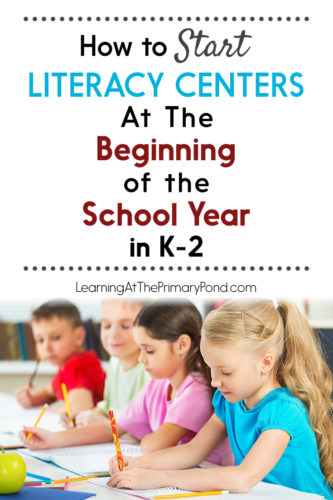
The Very Beginning
I do not start centers the first day, week, or even first few weeks of school. Period.
One year, a kindergarten teacher on my team told me that she starts centers on the very first day of school. Granted, there were two teachers in her classroom (not in mine). But still. Wow!
As for me, I am no superhero teacher, so I need a little more time!
I also think that my kids benefit from my “slow but steady” pace. Laying a solid foundation of routines and procedures does save time and frustration in the end!
Planning with the End in Mind
Every single year, I spend time imagining what my “ideal centers scenario” looks like. I picture how I want things to run in a month or two.
And then…I start making lists! (You’ll see why these lists are important in the next section.)
First, I make a list of simple literacy activities that I want to incorporate into our first few weeks of centers (after we actually start centers, that is). These might include things like:
- Partner reading
- Independent reading
- Simple word work activities (making words with play dough, for example)
- Listening center activities (i.e. listening to stories online)
- Writing activities (i.e. drawing pictures and making a story in a stapled booklet)
Second, I make a list of the centers routines and procedures I’ll need to teach in order to get centers functioning smoothly. This includes:
- Where different centers are located in the classroom
- General procedures for using each center
- How students will know which centers to go to
- Expectations for behavior
- Expectations for work
- Expectations for noise level
- Expectations for how students should or should not work together
- What to do if you don’t know what to do at a center
- What to do if you need to use the restroom or get a drink of water
- What to do if a peer is not using the center correctly
- What to do if something breaks / technology doesn’t work
- How to clean up
- How to know when to clean up
And last but not least, I make a list of simple, independent, non-academic activities that students can do with the materials I have in my classroom. They don’t have to be literacy-related! These might include:
- Playing with play dough
- Working with colored tiles or pattern blocks
- Working on puzzles
- Drawing with special markers or stencils
If you’d like to download a free template for making and organizing your own lists, please click HERE! The Stages
The Stages
In the next four parts of this post, I’ll share the different “stages” I use to get centers rolling. Now you’ll get to see how those 3 lists you made come into play.
I’ve included suggested timeframes for each stage. But these may vary! Your students will have different needs, so please go more slowly or more quickly as you see fit.
Here are the stages:
1. Learning Simple Literacy Activities (Weeks 1-4)
2. Learning Centers Procedures (Week 5)
3. Opening Centers One By One (Week 6)
4. Normal Centers and Small Group Rotations (Weeks 7 and beyond)
Now let’s dive into each stage!
Stage One: Learning Simple Literacy Activities (Weeks 1-4)
Before the school year starts, I take List #1 (simple literacy activities that I will eventually use in centers, like independent reading). I make a schedule for teaching these activities in a whole-group setting over a period of about 4 weeks.
When I teach one of these activities, I model it for students. I then give them a chance to practice it with my support. And I do all of this during the block of time that will eventually become our centers time.
Here’s an example:
Independent reading is something I want the kids to eventually be able to do during literacy centers.
I write some mini-lessons to teach expectations for independent reading. One mini-lesson might be how to stay on-task and in one spot during independent reading. Another might be how to tell a story from the pictures (for K-1).
I then decide when I will teach these mini-lessons (again, this is happening during the first 4-ish weeks of school, during the block of time that will eventually become our centers time).
During a mini-lesson, I model the focus procedure or routine. I have a few student volunteers model it for the class. And then I have the WHOLE class practice it while I support them.
However, if it’s an activity that I have limited materials for (i.e. making words with magnetic letters), I have the class do something simple like handwriting practice while I pull small groups to practice the activity. Everyone gets a chance to practice the same day that I presented the mini-lesson.
This whole process takes about 15-20 minutes (a bit longer if I have to have them practice in small groups). If my centers block will eventually be 45 minutes, we usually get through 2 (maybe 3) of these “practice sessions” per day.
Stage Two: Learning Centers Procedures and Opening Centers (Week 5)
By this point, the kids know how to do many of the activities that they will eventually do in centers.
What they don’t know is how to “do” centers! This is where List #2 comes into play (i.e. expectations for behavior, how to rotate, clean-up signals, etc.).
So during week 5, I set aside time to teach kids about 3-4 mini-lessons that cover topics from List #2.
During each mini-lesson, I go over the procedures, model them, and have a few student volunteers model them.
Then I have students go into “mock centers.” During mock centers, I set out the play-based activities from list #3 (i.e. playing with play dough or pattern blocks). We don’t spend too long in each center —maybe just 5-7 minutes.
Students rotate through the centers as they would the literacy centers. However, because the actual centers activities are non-academic, we can focus on learning how to “do” centers.
I include lots of positive praise to recognize students who are following procedures correctly. I am “right there” with the students, correcting any mistakes. I’m not yet teaching small groups.
Stage Three: Opening Centers One by One (Week 6)
After I feel that the students “get” how to do centers, I then begin replacing the play centers with the literacy activities they learned in Stage 1.
Here’s an example:
On Monday, I introduce the partner reading center. Students already know how to read with a partner; I’m just going over the procedures specific to the center. That day, they rotate through play centers and the partner reading center. The partner reading center is the only “academic” center that day.
On Tuesday, I introduce the word work center. Students already know several different word work activities from Stage 1; again, I’m just going over the procedures specific to that center. That day, they rotate through play centers, the partner reading center, and the word work center.
You get the picture — I add one “academic” center each day until all the centers are up and running!
Throughout all of this, I’m still not pulling small groups. I’m supervising students and reinforcing positive behavior.
Toward the end, I spend a couple of days just standing at the back of the room and observing. I don’t intervene; I want to see that students can work independently. I tell them that they are responsible for solving their own problems, and that they should act like I’m invisible! 🙂
Once students are able to work independently and all of the literacy centers have been introduced, then comes…
Stage Four: Normal Centers and Small Group Rotations (Weeks 7 and beyond)
By this point, students know the procedures and routines of centers. They are familiar with different literacy activities they can do in each center. They know how to work without my direct supervision.
Now I can start pulling small groups and teaching guided reading. Yay!
Of course, the hard work isn’t completely done. I absolutely have to return to some of those mini-lessons I taught during weeks 1-6. I have to reteach procedures and expectations throughout the year. I have to continue coming up with centers activities and embedding them into my whole and small group instruction (read more about this process HERE).
Have you already signed up to get the centers planning templates? They will walk you through this whole process! If not, you can do so by clicking HERE. And last but not least, if you’re not 100% clear on this whole process (this was a long post, I know!), watch this video where I explain it all again:
And last but not least, if you’re not 100% clear on this whole process (this was a long post, I know!), watch this video where I explain it all again:
I hope this is helpful to you. Happy teaching!

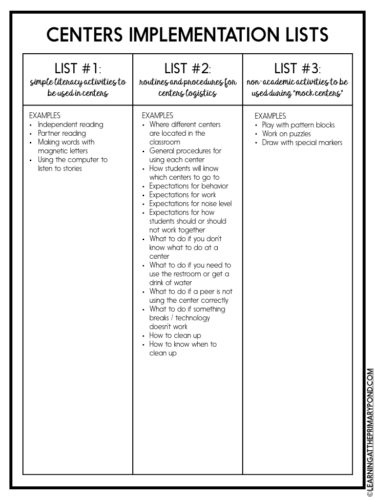
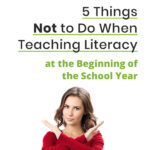
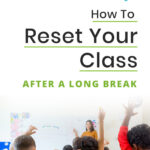


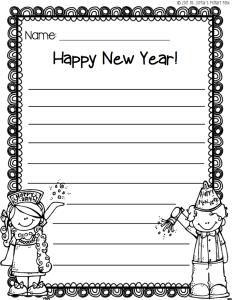
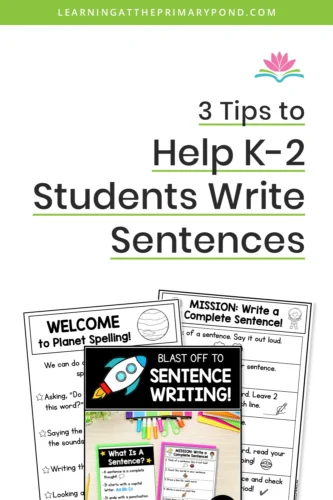






Thank you for posting!! This is going to be so helpful when I start this next year in First!!
I’m so glad this is helpful!! Thank you for reading, Alexandra!!
Alison
I am a VERY experienced teacher (40+years) but I’m always wanting to learn more or validate what I am doing. I am a teacher leader in my district. I have thoroughly enjoyed your webinars. They are practical, to the point and extremely applicable All of this is very beneficial for the “less experienced ” teacher as well as those of us who have been around a while. Thank you for doing this. I have purchased your writing units and plan to purchase more.
Eleanor, I’m so glad what I do is helpful to you even with all your wonderful years of experience!! Thanks for your sweet comment – I appreciate you reading my posts and coming to the webinars!
Alison
Absolutely what I needed, you are a blessing!!! I am looking forward to utilizing this scaffolding procedure to not only set up my literacy centers, but math centers also!!!
I’m so glad this is what you needed, Delia!! And absolutely yes about math centers – the step-by-step procedure is great for that, too! Thanks for reading!!
Alison
Your webinars are great and exactly what I need. I am amazed how you get everything done. How many children do you usually have at a center and for how long? Thanks for all the freebies, they are always so helpful.
Hey Lisa! It depends on the number of students overall, but I usually have about 4. They work with partners, though, so it could be 2…4….6….any even number. 🙂
I will also have another blog post in early Sept about grouping and number of kids at a center. 🙂
Alison
Thank you, thank you. Being a 3rd year teacher, I am still trying to work out the kinks of centers. However, I do have a couple of questions. Do you assign the students to groups for centers? Do they rotate independently or are the centers timed?
Hey Danielle! I do assign them to groups, and the centers are timed. I know that some teachers have success with letting kids choose their centers/the order/the timing, but for my sanity, I run that. I have them keep an independent work folders that they can work on unfinished work at a later time!
Alison
Thank you for posting these literacy centers posts. I teach in a multigrade classroom (1st & 2nd) and can never seem to get centers running the way I’d like and they normally end up disappearing by Christmas. I love these stages — I think my problem is that I wanted us all to jump in and work! Thank you for these organization tricks!
You’re welcome! It is definitely tempting to want to get started right away, but I think time spent up front definitely pays off! 🙂 Thanks for reading!!
Alison
Oh my gosh! This information is a game-changer! 2nd year teacher here and I will be going through my formal certification this year. I feel the way you have structured the process of introducing centers will help my students and myself be more successful at obtaining our goals during literacy center rotations. Thank you so much for sharing and for the freebie organization charts!! You rock!
I’m so glad this is helpful!! I hope the process helps you with your literacy centers this year!! Thanks for reading and commenting. 🙂
Alison
What a blessing this is to have! I appreciate the practical, sound advice on getting centers up and running. I’ve never heard it explained this way before. Thank you again for taking the time to go into detail on how successful this major part of a Kinder classroom can be.😊
Hi Melanie! I’m so glad this was helpful! Thank you so much for reading and commenting. 🙂
Alison
Hi,
I love your implementation of centers! Do you have a rotation schedule?
Hi Mayra! Do you mean a day-to-day schedule of how the kids rotate between centers?
Alison
I am starting my first year of teaching and this article was so helpful! I have been so stressed about creating and implementing centers. I will definitely be using this process. Thank you!
I’m so glad!! I hope this is helpful to you as you set up centers. Good luck with your first year!!
Alison
Hi Alison,
Thank you so much for this post! Literacy centers were the part of my day that I had no idea how to do and how to get my students to be independent so I could hold reading groups. This will be year five, so I have a lot figured out but this post filled in some of the missing pieces to make things run even smoother! This may be the most important classroom procedure post I have ever read. Thanks again! 😊
Hey Erin! I’m so glad this post filled in some missing pieces for you! Thanks for your sweet comment!!
Alison
Hi Alison! Thank you so much for your helpful posts! Very informative and I love the ‘up-front’ work to help with the ‘flow’ of the activities later on in the school year!
I did wonder if you have taught a Kindergarten class (just K’s) and if this worked the same way for this age, or would teaching the alphabet, and all the activities which go along with this, take a bit more time before actually teaching these steps you have provided? Your time and response is much appreciated!!
Hey Christine! Yep, I have taught straight Kinder, and I use this same process. The center activities I use with them at the very beginning of the school year do not require that they know the alphabet, so it works to teach those basic skills simultaneously. I definitely go more slowly with Kinder, for sure! Here’s a Kinder-specific post from a couple of years ago that might help: https://learningattheprimarypond.com/reading/how-to-start-kindergarten-centers/
Alison
What an easy and awesome post about centers! I will be printing your information and getting a plan this weekend!
Yay! So glad it’s helpful!! 🙂 Thanks for reading!
Alison
I love this plan! How do you stay on track if you have a mandated academic pacing chart. We have to have DRAs completed within the first couple weeks which means I am pulling individual students. And yes I am the only adult in the room. 😊
Hey Tammie! Because most other “blocks” in the day are shorter than they will be eventually (i.e. writing workshop, independent reading time), that does give me some time for assessments. But yes, I know 1:1 assessments are sooo time consuming!!
Alison
Do you just have them do 1 center per day and then rotate each group to a new center each day? Or do you have them rotate through a number of centers each day? How long do you typically have them stay at each center?
Thanks so much for this! New to Grade 1/2 this year after teaching junior grades so this is super helpful! 🙂
Hi Krysten! I actually have them do 3 centers per day, about 15 minutes each. It all depends on what activities you choose, though, and what your preference is! 🙂
Alison
How do you know which centers to do ? And do you create a schedule for certain students to be at certain centers everyday ? I’m just wondering about the rotation and how to set that up
Hi Meredith! I meant to respond to this before and got distracted! This post might be helpful in answering your questions: https://learningattheprimarypond.com/centers/learning-at-the-primary-pond-literacy-centers-kindergarten-first-second-grade/
Alison
Wow!. I loved this article and video. I teach 3 grades (1st, 2nd, and 3rd) and have 22 students in a Montessori school. Our reading and writing block is only 45 minutes and I am trying to develop a way for rotations to work. It will be the 4th week of school and I haven’t introduced any literacy centers yet (just got permission to actually do them) :-/ Any advice? Should I still wait a few more weeks to start reading groups in order to really develop and perfect the literacy centers?
Hey Rachel! You have a big range in your class, wow! I do think it’s worth spending a little extra time now to make sure students know how to do their independent activities. Time spent how will save you time later!
Alison
This is exactly what I needed! This is a practical and easy to follow process. I am so excited to see how this helps with the efficiency of my literacy centers and my students’ independence. Thank you so much for sharing your experiences and wisdom!!
I’m so glad this is what you needed!! Thanks for reading and commenting!
Alison
Hello!
How do you signal students to transition from one group to next? What signal tools do you use?
Hi! I’ve used different things…sometimes I do a timer, so the kids hear that (and it keeps me on track!). I also teach them that when I say, “Hands on top!” they respond with “That means stop!” They place their hands on their head so I know they won’t be messing with their materials, and then I can give directions about switching. The timer option is a bit easier though! 🙂
Alison
I’v been doing two groups each morning based on levels since the beginning of the year. I want to introduce literacy centers when I get back from break. I need to talk less and have the students do more hands on activities since most of my students have disabilities and respond more to visual and hands on learning. The only thing I’m worried about is the lack of independence my students have.
That is tough, Kerri! I can definitely relate to wanting to talk less. I wonder if it will help if you teach them how to do a certain activity but then change out the skill / other components, so that it keeps things fresh but still provides that structure they need?
Alison
Next year will be my second year teaching first grade. Centers were really hard for me last year. I know I did not set them up the right way and take my time so kids really knew what to do and in turn it was chaotic. I really love your resources and am thinking about setting my centers up this way you have explained here.When you get to stage 2, and kids are doing play based centers, is the playdo center lets say the independent reading center? Do you tell students that we are practicing for our literacy centers and… Read more »
Hi Abbey! Great questions! For your first question, I usually have the “easy” play center be in the same space and mimic similar activities that students will do when they get to “real” centers. So the reading center might just be looking at books (or maybe some special magazines). The word work center might be a playdough center (because they may eventually make words with playdough). And they are in the same spots, correct! Basically, everything stays the same except for the actual activity. For your second question, the kids stay in the general area of the center (the way… Read more »
Hi Allison,
This is my first year starting literacy centers. I was wondering where I can purchase your center routines and procedures. I would like to know your suggestions on how you would deal with various situation such as ‘what to do if you don’t know what to do at a center or what to do if a peer is not using the center correctly’. Please let me know where I can access this information. It will be useful for me.
Thank you.
Hi Anam! I think the materials you’re looking for are included in my centers bundles – but let me know if I misunderstood or if you have any questions!
https://www.teacherspayteachers.com/Store/Learning-At-The-Primary-Pond-Alison/Category/-Literacy-Centers-Bundles-292925
Alison
Hello! This post is so helpful and I am excited to apply these centers to my first graders this year. This is my first year teaching so you can imagine I am pretty excited and nervous! 🙂 But unfortunately I cannot download the free literacy centers toolkit… the download button seems to not be working. Can you help me with this?
Hi Ellen! Sorry about that. Sometimes the button is a bit sticky. Try this link: Free Download: Literacy Centers Toolkit